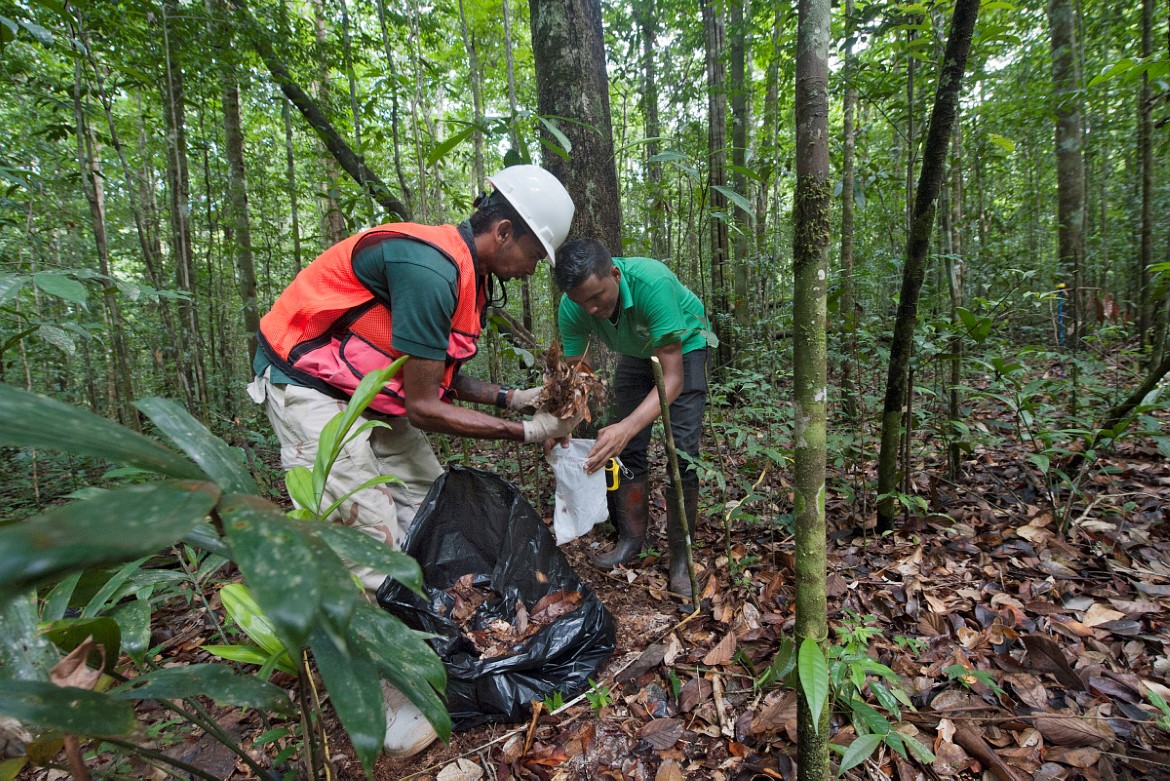
Local communities in Guyana and Brazil adopted innovative tools and methods for community-based forest monitoring
Organization
Global Canopy ProgrammeThe purpose of the project was that Community-based Monitoring, (C-MRV) is recognized by national and international policy makers as an integral source of information for accurately and cost-effectively monitoring REDD+ activities and safeguards; tropical forest communities understand the benefits and risks of REDD+ and have the knowledge and tools to take informed decisions and play a proactive and independent role in making REDD work in their area.
Why did Norway decide to support this project?
The justification of this project was related to both the lack of a clear methodology for forest communities to engage in REDD+, and to the limited interaction between civil society and government stakeholders in the planning and implementation of REDD+ in Guyana and Brazil. Global Canopy argued that enhancing such interaction would have pushed for the incorporation of social safeguards in REDD+, including a free, prior and informed consent framework (FPIC) and monitoring of safeguards.
The organization also highlighted that a system for community based monitoring systems (C-MRV) that directly fed into national Monitoring, Reporting and Verification strategies was missing. Global Canopy recognized that the major barriers to the uptake of monitoring strategies by communities were the lack of technical capacity and the poor sharing of knowledge between community, civil society and governmental stakeholders.
This project aimed to address these shortages and was especially relevant for the goals of the Norwegian Climate and Forest Initiative (NICFI), namely safeguards to protect the livelihoods of forest dependent communities and engagement of indigenous people in development and implementation of REDD+. In light of the justification and relevance of the project, Norway decided to support this project.
The project focused on achieving the following four outcomes
Outcome 1 : The Makushi people in North Rupununi are able to independently collect and analyze data to support informed decision-making on territory management and engagement in REDD+ activities and National REDD+ strategy.
Outcome 2: The Government of Guyana and civil society stakeholders in the national MRV Committee are well informed about community-based monitoring approaches and take decisions on how it could be incorporated into National MRVS
Outcome 3: Emerging methods and tools for C-MRV are replicated in Chico Mendes Extractive Reserve in Acre, Brazilian Southwestern Amazon, allowing broader application and improvement of methods; informing rubber tappers decision making on territory management and engagement on REDD+; as well as informing the MRV policy in Acre State`s REDD+ programme about the potential incorporation of community-based monitoring .
Outcome 4: Policy makers at national and international levels are informed of the CMRV potential to address REDD+ safeguards, as well as communities and REDD+ stakeholders have access to best practices and methods on CMRV organised and provided by the CMRV practitioners knowledge sharing network.
Please find Global Canopy Programme`s final results report to Norad on these outcomes in the PDF file <here/in the box to the right>.
Results
Overall, Norad assesses that the Global Canopy Programme has helped to achieve the outcomes above to a satisfactory degree.
Regarding outcome 1, Norad assesses that Global Canopy contributed to its achievement together with other actors involved in the region of North Rupununi, especially WWF. The design of a community-collected database that informed 16 villages was important for the achievement of this outcome.
Global Canopy achieved outcome 2 and 3 in a satisfactory manner, although some external risks occurred limiting the full goal achievement, especially in relation to government uptake of CMRV. An interesting result has been the establishment of a model for community-to-community training, which has demonstrated the ability of local communities to gather and analyze data on forests, natural resources and well-being, in an independent manner.
The efforts to achieve outcome 4 have included sharing in an innovative way knowledge on community forest monitoring through the web platform ForestCompass.org, reaching a wide national and international audience of policy-makers. Furthermore, to augment the advocacy capacity of the project, strategic partnerships were developed with other organizations, including WWF. Global Canopy reports that these partnerships can also add to the longevity of the impact of the project beyond the end of its funding.
Lessons learned
Some of the lessons learned are described below, but please consult the organization`s final report to get the full overview.
Global Canopy reports that through consultations with different practitioners and communities, it became clear that the focus on REDD+ was somewhat problematic due to issues of past engagement not meeting expectations. It was therefore decided to change the name of the project from REDD Compass to Forest Compass.
Since the use of smartphone technology introduced some challenges in training and represents a significant cost, the trade-offs in using technologies for community based monitoring should be further explored prior to pursue similar activities.
Low social cohesion and contested resource use in the project area have presented challenges for collecting data, especially on deforestation drivers and land-use change.
Standardizing methodologies on best practices in C-MRV is the best way to promote replication at scale, but will require further engagement and consensus among practitioners and governments worldwide.
Participatory workshops and events proved to be the most effective way of sharing information and building capacity.
Disclaimer
The result descriptions are based on the information provided by the organisations. Their presentations and conclusions do not necessarily reflect the views of Norad. Norad has not verified all results reported.
